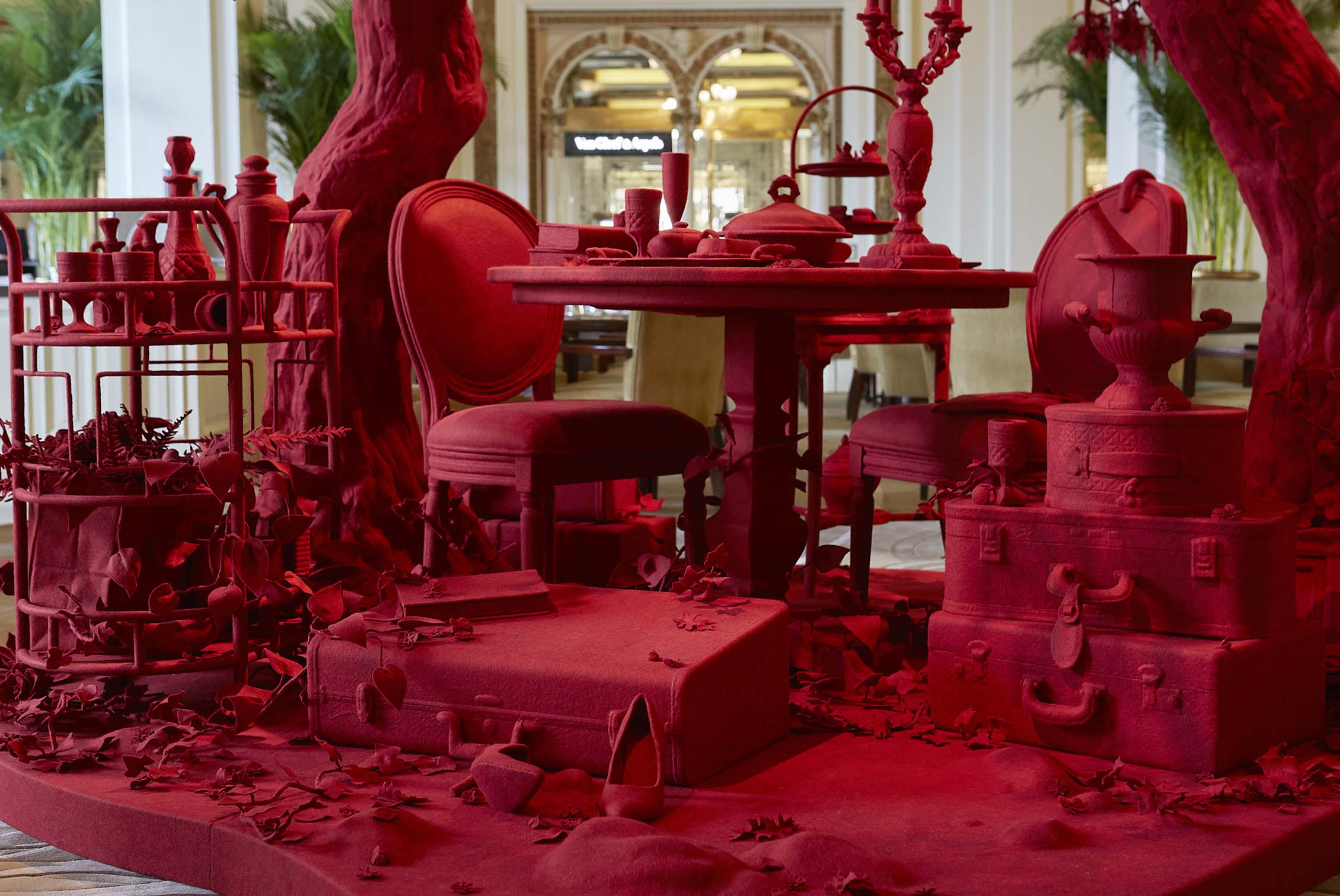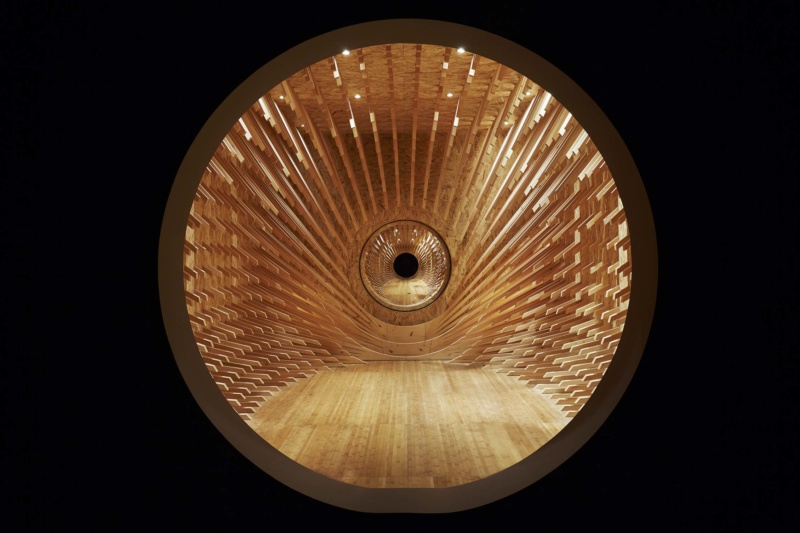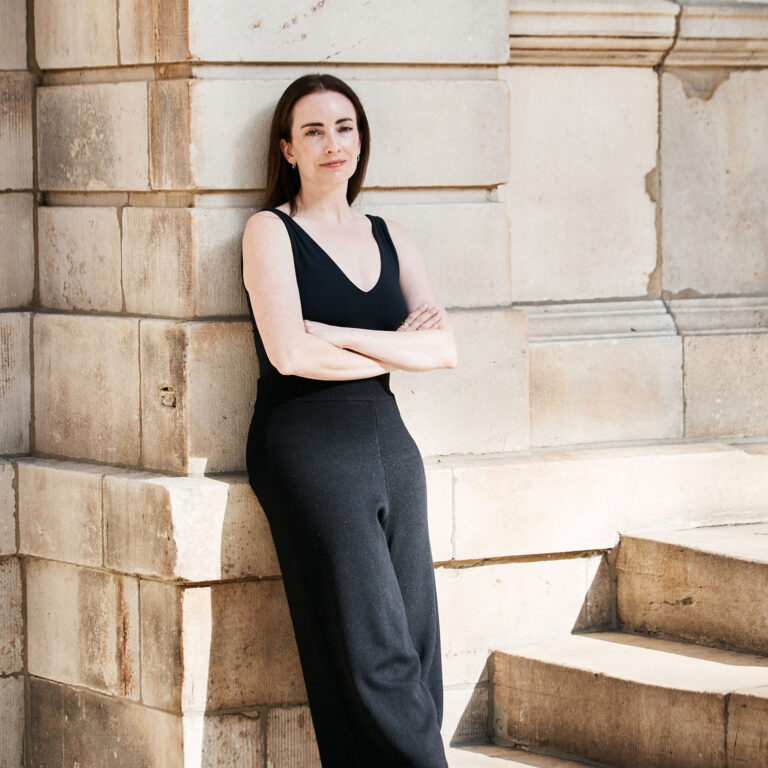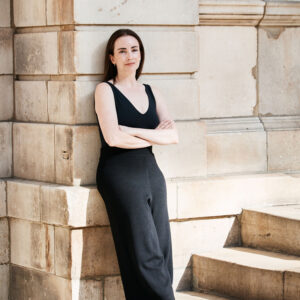
When you think of art sponsored by and displayed in a hotel, chances are what comes to mind is easily digestible work plopped in the middle of the building’s existing life. True disruption is costly, time-consuming, and often at odds with the primary function of a hotel. Which is what makes The Peninsula’s new “Art in Resonance” program, which opened during Art Basel in Hong Kong, so noteworthy. Curated by Isolde Brielmaier and Bettina Prentice, it features immersive installations by Janet Echelman, Ivan Navarro, Timothy Paul Myers, and the Shanghai-based architecture collective MINAX. Each breathes new life into the five-star hotel’s posh existence, inviting visitors, guests, and passers by to rethink what it means to live alongside art.
Echelman’s work, in particular, disrupts not only the building’s facade, but its ability to be used as originally intended. Earthtime 1.26 resembles a giant technicolor fishing net draped over the front of the hotel. Two corner suites as well as a large poolside outdoor balcony were sacrificed in order to install the piece, which looks impossibly light but is actually held in place by a military-style truss bridge, among other things. Similarly, MINAX’s The Wonder Room, a wooden structure based on a traditional Chinese tea house that takes on a transcendent quality when used for regularly scheduled gong-based “sound baths,” required the hotel to use one of its ground-floor retail spaces, previously occupied by a high-end jewelry brand. Guests who might be confused as to, for example, why they can’t use the balcony or what that thing hanging off the building is, are provided with literature about the art, as well as a complimentary spread of chocolates inspired by the program.

The Peninsula has done the more traditional kind of art sponsorship, too—they’re currently hosting an exhibition of paintings and sculptures by Fernando Botero, and in 2014, installed a Tracey Emin neon on the building’s facade. But according to Brielmaier, “They wanted to do something different. They want to engage their guests, and they want to have this art extend beyond the walls of The Peninsula. Art and culture is a great way to open things up and build a community.”
If part of the idea was to draw people into a rarefied space often gawked at by tourists but comfortably inhabited by only the very wealthy, it seems to be working. Myers, who riffed on the hotel’s legendary afternoon tea by situating one of his signature collections of felt-wrapped found objects among the dining tables in the lobby, recalls finishing installation late one night. “There was a cleaning crew downstairs and they all gathered around and took pictures of the work,” he says. “We had a conversation. There was a bit of a language barrier, but they are the people I want to talk to.”
The concept of art as a universal language, while a bit cliched, is fitting in this environment — not just because it houses people from all over the world, but because the so-called “Grand Dame of the East” represents a dying breed of old world hospitality, which has to find ways to remain relevant to a new generation of travelers with very different values than those previous. In this way, “Art in Resonance” feels like a model for how to do corporate-sponsored contemporary art in a way that feels authentic to the viewer and beneficial to all parties involved. The fair compensation of the artists, for example, was agreed upon from the start.

“There are often situations where brands approach emerging artists and they don’t necessarily feel it’s necessary to pay them,” Prentice explains. “They just tell them that they’re giving them a platform. But the Peninsula has been nothing but generous and gracious in giving the artists the financial, logistical, emotional support to produce these works.”
Indeed, after the program wraps up at the Peninsula Hong Kong on June 21, it will travel to Paris, then Tokyo, and eventually to other locations in the hotel’s portfolio, with new works by local artists to be added in each. Artists will travel to each location to ensure proper installation.
“I want for it to stop being an object that you look at and start being an experience,” Echelman says of her work. “I had not even seen this before—when I walked in last night, the rain awning, as you look up, has windows. And suddenly, it was a frame. That moment of discovery is everything.”










 in your life?
in your life?

